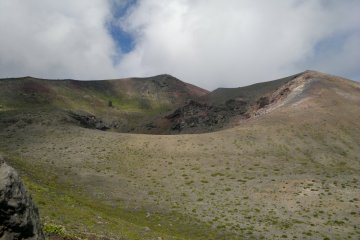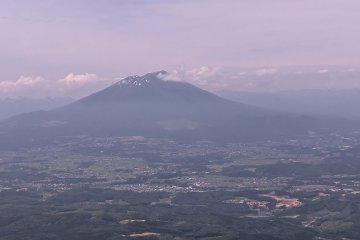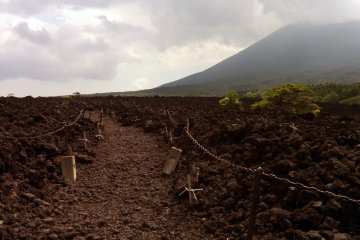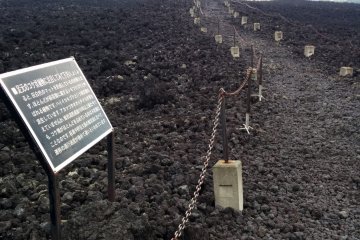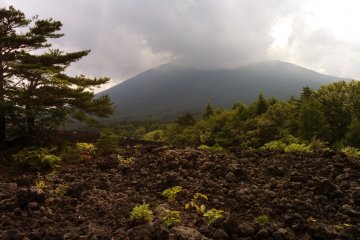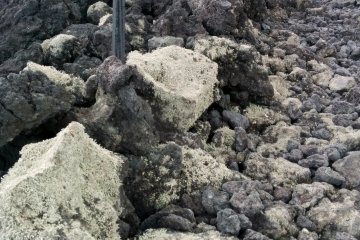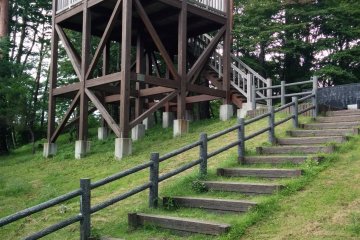Japan is your best friend for mountain adventures. With two-thirds of Japan's geography mountainous, you can expect awesome hiking and top notch ski resorts across the country. On top of that, many of these mountains were or still are volcanically active so be on the look out for hot springs in the vicinity. If you find yourself traveling around the northeastern region of Japan known as Tohoku, do check out Mt. Iwate for a unique hiking experience across the Yakehashiri Lava Flow (岩手山焼走り熔岩流).
In 1732 Mt. Iwate exploded, spewing a river of lava which spread far and wide along its northeastern slope. Nearly 300 years later and you'll still see almost nothing but a sea of black volcanic rock along the marked walking path. At the entrance to the lava flow across from the parking lot are some maps and info of the area (in Japanese with a little English) and sometimes a volunteer guide greets visitors. Some websites I found mention a round trip journey through the rugged terrain takes about two hours. However, the guide there told me it takes about an hour, and that's how long it took me. The path is atop loose gravel and rock, but there are only small changes in elevation. It is not wheel chair or baby stroller accessible, nor should pets access the protected natural environment. It's not a long or challenging hike, but you should still be careful when stepping and to hydrate as there is absolutely no shade when traversing the lava flow. Now you know what to expect, so its time to experience.
Walk through the lava flow and all you hear is the crunch-crunch of your feet on the volcanic rock and the occasional dragonfly or grasshopper which seem to invade the area, perhaps because of the lack of predators. Actually, when I went I heard several booming echoes, too. First I thought it was Mt. Iwate erupting again! But with no wave of lava rushing towards me, I determined it was either construction or mining activity beyond the tree line. Walk deeper into the 3 km long, 1.5 km wide flow and you see some trees and greenery is popping out of the 5 to 10 meter thick blackness. Well it looks like it is popping out but actually the only life that has regrown through the volcanic rock from the soil below are some mosses. The greenery you see provides a beautiful contrast to the pitch black, but it in fact grows on top of the rock and not from beneath. Oddly, the sparse trees make the lava flow more impressive to look at but they are often not mentioned in tourism mediums or shown in pictures because the "barren black rock" is a stronger image and advertising tool to some people I suppose. After an enjoyable walk through the rocky landscape you have the option to return the same way or take the mostly shaded and paved sidewalk along a street back to where you started. If you're up for more adventure, there are plenty of other hiking trails on Mt. Iwate. Or before returning to the station stop by Hachimantai Flowerland for an oasis of nature.
The Yakehashiri Lave Flow is somewhat difficult to access. From Morioka you can take an hour long bus or take the local train. Either way you end at JR Obuke Station. From there your only realistic option is a 15 minute taxi ride (about 3000 yen). There are no buses, rental bikes, etc. and a walk is 10 kilometers, some of it up the mountain road. Therefore I would recommend traveling via rental car from Morioka if you can or at least traveling with a group to split the taxi fare. There is a hot spring at a hotel open for day use a 5 minute walk away from the lava flow trail head. You can relax there, eat at the restaurant, or call a taxi should you not have a phone.



